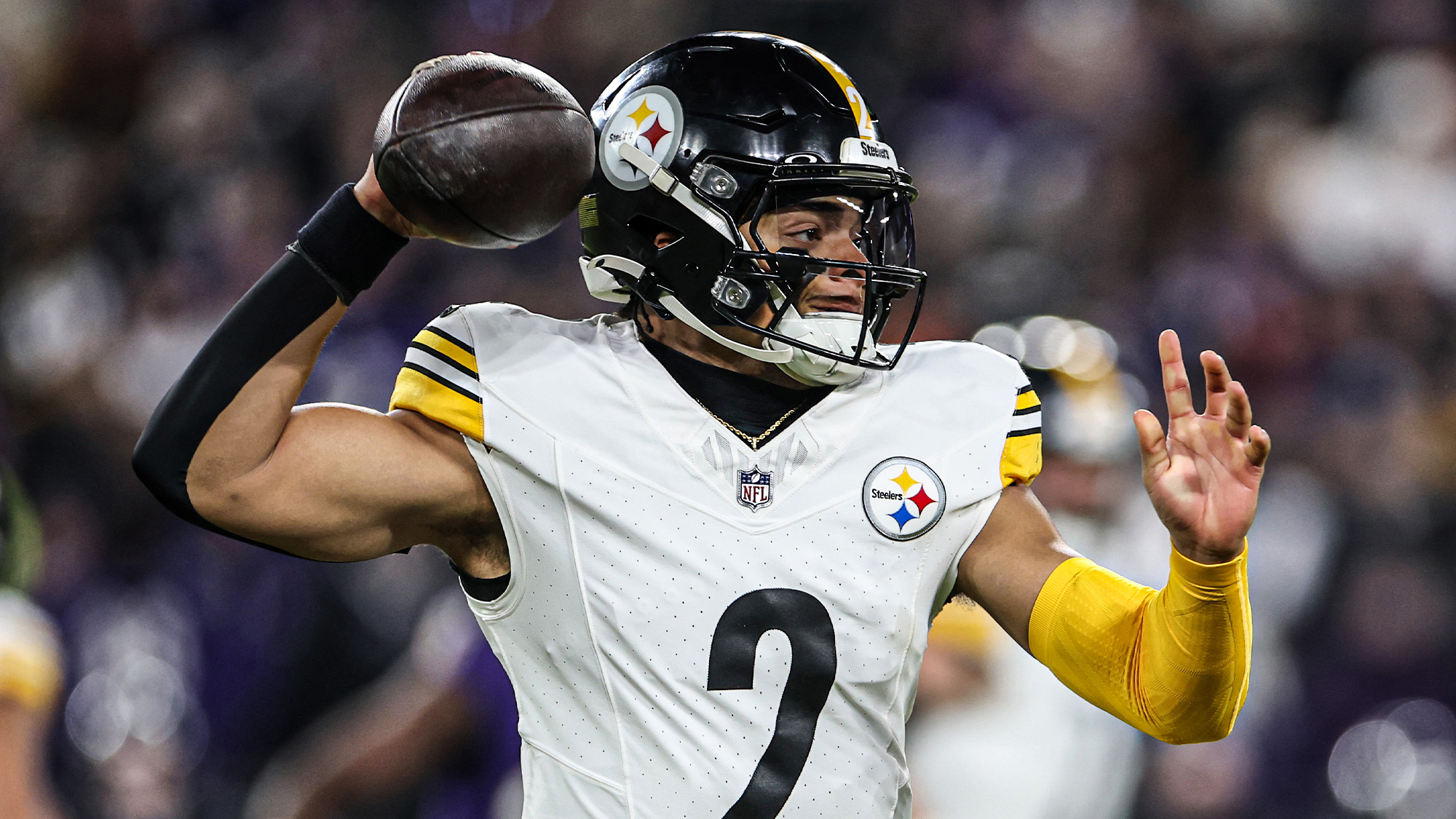Was Justin Fields a good signing for the New York Jets?
Jets X-Factor’s Michael Nania already analyzed the pros and cons of Fields’ game from a statistical angle. One of the most worrisome points he made was that Fields wasn’t as careful with the ball as his low turnover number in 2024 would suggest, and he also lost most of his big-play ability, both on the ground and through the air.
From that perspective, the Fields signing can certainly raise some eyebrows. Still, it is undoubtedly a bet on upside; he is still just 26 years old. If the Jets were trying to follow the Sam Darnold model of rejuvenating a first-round bust, Fields was undoubtedly the best option available. Given the lackluster quarterback options on the market, targeting Fields makes sense.
Overall, the Fields signing certainly seems like something the Jets can live with in their current situation. They’re not in a window to compete for a championship, but they’re also not a tanking team. He fits in that picture.
However, there is one key factor that most Jets fans likely are not considering: Fields’ contract.
Sure, most fans know that $20 million per year for Fields is an overpay. But in this wild free-agency period, it’s just a drop in the bucket among the ridiculous number of overpays that have occurred across the NFL. (In what universe does former 49ers guard Aaron Banks deserve a four-year, $77 million deal? To me, that one is the most mind-blowing of the bunch.) In that climate, reacting to Fields’ deal with a shrug makes sense.
While that sentiment pains my financially frugal and cap-conscious mind, it is understandable — if not for one key component: the structure of Fields’ contract.
When a player signs a two-year deal, you would expect the cap hits to be at least somewhat aligned between the two seasons. While longer-term deals tend to be backloaded, two years don’t give a team a lot of time to push money to the future. Certainly, a team that’s not looking to compete for a championship shouldn’t have much incentive to push the cap hit down the road.
But that’s precisely what general manager Darren Mougey did.

So how and why is this contract so injurious?
Practical ramifications
You can see on the Over the Cap contract above that Fields’ cap number in 2025 is $8 million. That’s a very low number for a starting quarterback; for reference, the first three picks in the 2024 draft have higher cap hits.
However, given that Fields has a $40 million contract, the Jets will need to pay the piper later on. His cap hit jumps to $23 million in 2026, followed by a dead cap charge of $9 million in 2027.
That’s not the worst part, though. A $23 million cap hit for a starting quarterback is still low. But — that’s if he is their starting quarterback. If not, the Jets will have a backup quarterback counting $23 million against their salary cap.
You might think that the Jets can simply cut Fields and remove this issue. Remember, though, that he had $30 million guaranteed in his deal, and only $8 million of it counted in Year 1. That means the other $22 million will hit the Jets’ cap at some point no matter what (unless they trade him, which, I suppose, needs to be taken into consideration).
If the Jets release Fields outright in 2026, they’ll take a $22 million dead cap hit with just $1 million in cap savings. If they designate him as a post-June 1 release, they’ll take a $13 million dead cap hit in 2026 and $9 million dead cap in 2027. They will save $10 million in cap space in 2026, though.
Crucially, though, post-June 1 savings do not actually hit the cap until post-June 1. In other words, the Jets would carry Fields’ $23 million cap hit throughout the offseason and only receive the $10 million relief on June 2, when offseason signings are mostly over.
No matter what, if the Jets cut Fields in 2026, they’ll take $22 million total in dead cap — divided up in some way or another, whether in one season or two. That’s a steep, steep price to pay for a player of Fields’ caliber.
Think about it this way: assuming the Jets release Aaron Rodgers with a post-June 1 designation, they’ll sustain $35 million in dead cap in 2026 for his contract. Imagine then adding in another $22 million or $13 million for Fields. That means the Jets could theoretically have either $57 million or $48 million in cap space tied up in two quarterbacks who are no longer on their roster.
Why?
Let me geek out for a few minutes and go through the details of Fields’ contract. I’ve done this in the past in writing for other contracts, but now, I’m going to do it on video. (Video should be viewed in full screen.)
Essentially, by giving Fields such high guarantees, particularly in his 2026 base salary, Darren Mougey put most of his eggs in the Fields basket. The Jets are not completely stuck with him in 2026, but they’re banking a lot more heavily on him than you’d think — or than they should be.
Getting Fields over the rest of the quarterbacks due to his theoretical upside isn’t a bad idea. Committing to him for two years is a bad idea.
I spent much of the last three years since my arrival at Jets X-Factor castigating former GM Joe Douglas for his contract decisions. Mougey’s first two contracts as Jets GM (specifically the Brandon Stephens deal, but also this one) challenge any contract Douglas signed in his entire tenure for the most head-scratching and short-sighted that I’ve seen since joining Jet X.

